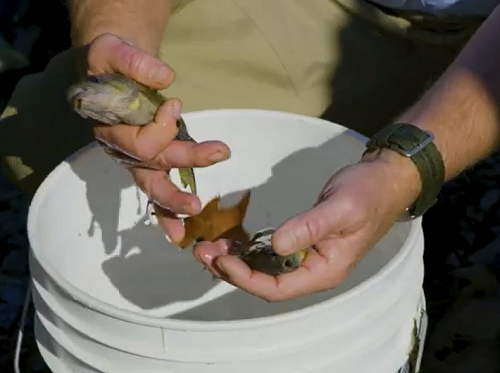A recent video released by the Kentucky Transportation Cabinet highlights how the agency’s biologists work to restore and improve streams and wetlands involved in state transportation projects.
[Above image via KYTC]
KYTC has worked closed with the Federal Highway Administration as well as other federal, state, and local agencies to identify and resolve environmental challenges on transportation projects. That results in more efficient environmental processes, thereby reducing time and funds to be expended on transportation projects, noted KYTC.
KYTC noted that it works with a wide range of groups to tackle such mitigation projects, including the Kentucky Department of Fish and Wildlife, the American Indian Tribal Outreach program, and the U.S. Fish and Wildlife Service, among others. Each of those “partnering efforts” discusses particular challenges common to transportation projects and provide resolutions beneficial to the environment.
State departments of transportation across the country tap into a variety of “biological resources” to minimize the environmental impact of infrastructure projects under their purview.
For example the Arizona Department of Transportation detailed in April 2022 how “biomonitor” teams from Northern Arizona University or NAU help the agency’s crews find and relocate endangered species – including snakes, birds and fish – from construction sites.
Specifically, those biomonitor teams train construction workers and others involved in transportation projects to identify any endangered species and what to do if they come across one. The teams also monitor construction activity and help safely remove any endangered species out of harm’s way.
Meanwhile, July and August every year, the North Carolina Department of Transportation temporarily lowers speed limits from 55 mph to 20 mph on the William B. Umstead Bridge – locally known as the old Manns Harbor Bridge – at dusk and dawn during the roosting period of purple martin bird flocks.
NCDOT noted in August 2022 that it has collaborated with the Coastal Carolina Purple Martin Society since 2007 to educate the public about the purple martin flocks, to protect both the birds and motorists.
From late July through August, the west end of the bridge becomes home to as many as 100,000 purple martins as they prepare for their annual migration to Brazil. The birds roost under the bridge at night, departing at dawn to feed and returning at sunset. The flock is so large during its peak that it is visible on radar.

